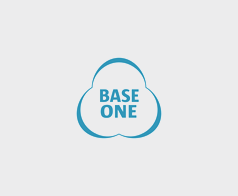
Coffee culture v social media
Ever wondered why the British and the French use social media differently?
It’s all a question of context, apparently…
Base One Archives

Ever wondered why the British and the French use social media differently?
It’s all a question of context, apparently…

Over the last 2 years, social media monitoring has become a must for any self-respecting company, and for good reason. A tool supposedly developed to support a new marketing approach has turned out to have useful applications in many other areas

If somebody steals what is rightfully yours, what should you do? Sue them? Chase them and get it back? Phone the police? Hunt them down?
There is a growing school of thought to say you should be thanking them…

It’s pretty much accepted these days that social media is a channel that B2B marketers cannot afford to ignore. Business buyers are using social media more and more often to gather information, so B2B brands need to be out there telling the world exactly what they can do.
But, of course, it isn’t that easy. Or rather, it isn’t that easy if you want to do it effectively. And one of the most important steps is to plot out the social media landscape for your target audience. Where are they going? Which websites do they get information from? What do they do when they’re there? In short, one of the first things that you need to do - before you worry about whether you are going to run YouTube video interviews or a series of whitepapers - is to find out who are the key influencers in your marketplace.
If you can convince those key individuals that you have something worth talking about, it will give your social media presence an instant lift.
But first of all you have to find out who they are - here are a few simple tips for identifying the “go to” people in your corner of the social media world.


 (Image courtesy of Sean MacEntee)
(Image courtesy of Sean MacEntee)
What to do when your brand is under attack?
More and more companies are going social and have established a presence online as a means of engaging directly with their target audience and building communities around their products or services. As most social media departments will know, when starting a campaign it is always important to monitor the brand to find out why, what and where they are being talked about. This will give the campaign a structure when setting up profiles on various social media platforms and creating engaging content, whether it’s in the form of a blog post, tweets, video, etc. There is quite a lot of work involved when setting up and executing what a business might think is the perfect social media plan and strategies.
What happens when it all goes wrong & the consumers start to attack a brand? In the last couple of weeks I followed the John Lewis group on Facebook. The company had been subjected to a series of verbal attacks for advertising their Christmas video. The video was advertising their Christmas message, which caused somewhat of an uproar towards the end of the video when it showed a child coming out to hang a stocking on his dog’s kennel, with the dog sitting outside in the snow. This prompted animal lovers to complain about animal cruelty in there droves. A series of very negative mentions continued to pour onto the Facebook page over the next few days.
To view the video: http://www.youtube.com/watch?v=mpV-xagkTDU
When you are an established brand, how do you deal with such a series of negative mentions?
Firstly, you need to listen to the key points of contention to gain an idea of how to approach and placate the audience. The worst thing a brand can do is shy away and ignore comments being made as brand credibility will be lost immediately, which could potentially lead to a loss of sales/loyalty. The audience are giving their feedback and they will at some point want to be have their concerns and opinions addressed by the brand.
John Lewis monitored their Facebook page and with the initial comments, simply passed on the complaints email address. As momentum built however, this was not feasible and it became apparent that they would have to address the issue ‘en masse.’ After a day or two John Lewis released the message below:
This message was intended to reassure the audience with the tone that they adopted, and offering a willingness to make a shorter version of the advert. Since then there were still negative comments being made, however, the Facebook wall was updated the next day with a resumption of their normal social media activity.
This is a great example of how a brand or a large business tries to resurrect their brand’s image. Above, I touched on ‘the tone that John Lewis adopted,’ and wanted to further explain this. A company’s tone is extremely important in social media as a means of defining the brand’s values and bringing recognition for the sort of company that they are. It is therefore really important to understand the brand so think about the tone every time a response is required. It’s not the end of the world when your brand receives negative mentions, act on it sensibly and you will either sway those criticising or you will take the emotion out of the equation.
On a final note, I obviously had an opinion on John Lewis’s Christmas advert and I was for keeping the old advert. This was simply because it was meant to depict a light-hearted scene, cleverly designed to evoke positive emotions related to the Christmas season.

There’s no denying the rise of YouTube. The site experiences in excess of two billion views a day, 24 hours of content is uploaded every minute.
How can it help your business?

Hi. I’m Nick. I’m 15, a student at Kingston Grammar School and doing a week’s work experience at Base One. Throughout my time here I’ll be writing a blog to tell you about all my new experiences as I sample the world of work for the first time. One of my new experiences will be writing a blog so I hope you enjoy reading about my unique perspective on the world of B2B marketing.

FINAL UPDATE:
Thursday 13:31 BST
Now that the dust has settled I can report back on the whole experiment… The final count, including pdf and video views, was 570 downloads - and while I’m a little disappointed we didn’t make 1,000, I’m still delighted that the experiment worked by proving clearly how content can spread if it is interesting.
570 people voluntarily accessed a piece of information - a fact that one member of my audience put into context by saying that it would cost thousands of media dollars to achieve the same effect by interruptive advertising.
The presentations at the conference yesterday were fascinating - made all the more lively by the fact that we were trying to demonstrate the power of content marketing live while the session was going on.
I will publish a document soon that recounts how the whole thing worked, and maybe create a graph of traffic over time, showing the effects of key retweets, blogs etc as far as it is possible with the analytics data to hand.
In short though, we also had 443 visits to the live blog [here], as well as 3 retweets
So we didn’t get the 1,000 clicks but - if an experiment is judged by whether it demonstrates a point, I think it was a resounding success and I thank you all for helping make it work!
So what should we do as a follow-up? If anyone has any suggestions, I’m all ears!
Thanks again
John
15:34 BST
391 downloads.
Another video has been added to the IDM YouTube channel, an interview with Joel Harrison of B2B Marketing Magazine talking about his views on the opportunities and threats of Social Media.
Larry Kuntz, re your question: I will check with John who produced the document and let you know as soon as he’s finished presenting!
15:00 BST
Session 2 starts, and we are now at 364 downloads. The highlight of session one was a question from the floor: wouldn’t we get more downloads if John Bottom dressed up in a pink rabbit suit and was videod pleading for them? Frivolous maybe, but a little bit of drama is never a bad thing with this kind of campaign…
We have been asked how this can be an experiment when we have spent some of our time asking people to tweet about it. Well that’s the real challenge with any Social Media campaign: you have to start by seeding them. We have generated going on 200 tweets so far. We have probably contacted 20 people.
If you haven’t yet downloaded the white paper: Opportunities & Threats - the future of Social Media as viewed by senior marketers, then click here.
14:15 BST
Session one of two starts, and we are at 334 downloads. John Bottom shows us how research shows that Social Media is more influential for the under 30’s than the over 30’s.
We’ve also just uploaded our first video interview to YouTube - Opportunities & Threats, video stylee!
If you haven’t done so yet, please click here to download the paper.
12:30 BST
Very interesting presentation from David Chalmers of Cisco, especially highlighting the power of Twitter, which they use extremely well as a messaging and recruitment tool for events, and also the importance of influencers. Here he gave an interesting example which I find runs very true: you may find your influencers on-line, but the best way to engage them is still off-line, in the pub, with beer!
One point I wasn’t 100% on was regarding Facebook. David said he still regarded Facebook as a ‘personal’ network and not relevant, but that recent conversations with them suggested that they are going to change this. It’s true that Facebook doesn’t work for all businesses, but this is changing of its own accord.
Anyway, back to the experiment. We’re now up to 245 downloads, so a big increase over the last hour and a quarter. The US is waking up (thank you friends from across the pond), and some selective messaging of influencers is proving fruitful. Still, we’re hoping for a bigger boos during the experiment itself. One more update before it, though.
If you haven’t done so yet, please download the Opportunities and Threats paper here.
11:15 BST
It’s coffee time at the IDM B2B Conference, followed by a much anticipated session on ‘Riding the hype of Social Media for B2B marketing’ presented by David Chalmers of Cisco. We’re hoping to ride some of that hype ourselves as we build momentum:
- 60 tweets to date using hashtag #GCME
- Document being posted to slideshare
- Discussions on various LinkedIn groups
- Video interviews with some of those quoted in the Opportunities & Threats paper will shortly be posted to YouTube
153 downloads in total, so 34 in the last hour. A good build-up till the actual sessions, running from 2.00 - 2.30 pm and 2.45 - 3.15pm.
10:15 BST
The conference is under way and the word is already getting out on today’s experiment. We’re up to 119 downloads of the Opportunities & Threats paper. Thanks for all those already helping with the push. More to follow….
Wednesday 19th May, 06:43 BST
It’s a beautiful early morning in London, and the experiment starts here. On way to venue. Notice that the current download count of the Opportunities & Threats paper is already at 82, which is encouraging since we only really started at midnight. Lots more work today to get to 1,000 hits. If you haven’t read it yourself, take a look.
Monday 17th May, 17:10 BST
There are just 2 days to go. Wednesday 19th May is the date of the Great Content Marketing Experiment. I will be blogging live from the annual IDM B2B Marketing Conference on the 28th floor of the Millbank Tower in Central London.
Just to recap, the aim is to prove the viability of content marketing in a live experiment. We therefore not only have my colleague John Bottom talking about the theory of content marketing in his presentation, but a larger team will be busy putting it all into practice by doing all we can to achieve 1,000 downloads of this document. Find out more about it and how it was created for the event here.
Look out for live updates on the day, and if you’re on Twitter, follow the hash tag #GCME.

In action